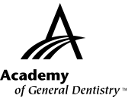|
Exercise No. 358
Subject Code: 259
Fissurotomy (Micro) Dentistry
The 15 questions for this exercise are based on the article, “Approaches to managing asymptomatic enamel and dentin cracks”, on pages 58-62. This exercise was developed by Daniel S. Geare, DMD, in association with the General Dentistry Self-Instruction committee.
|
Reading the article and successfully completing this exercise will enable you to understand:
- the nature of symptomatic and asymptomatic cracks;
- the causes of symptomatic and asymptomatic cracks; and
- treatment options for cracked teeth.
|

